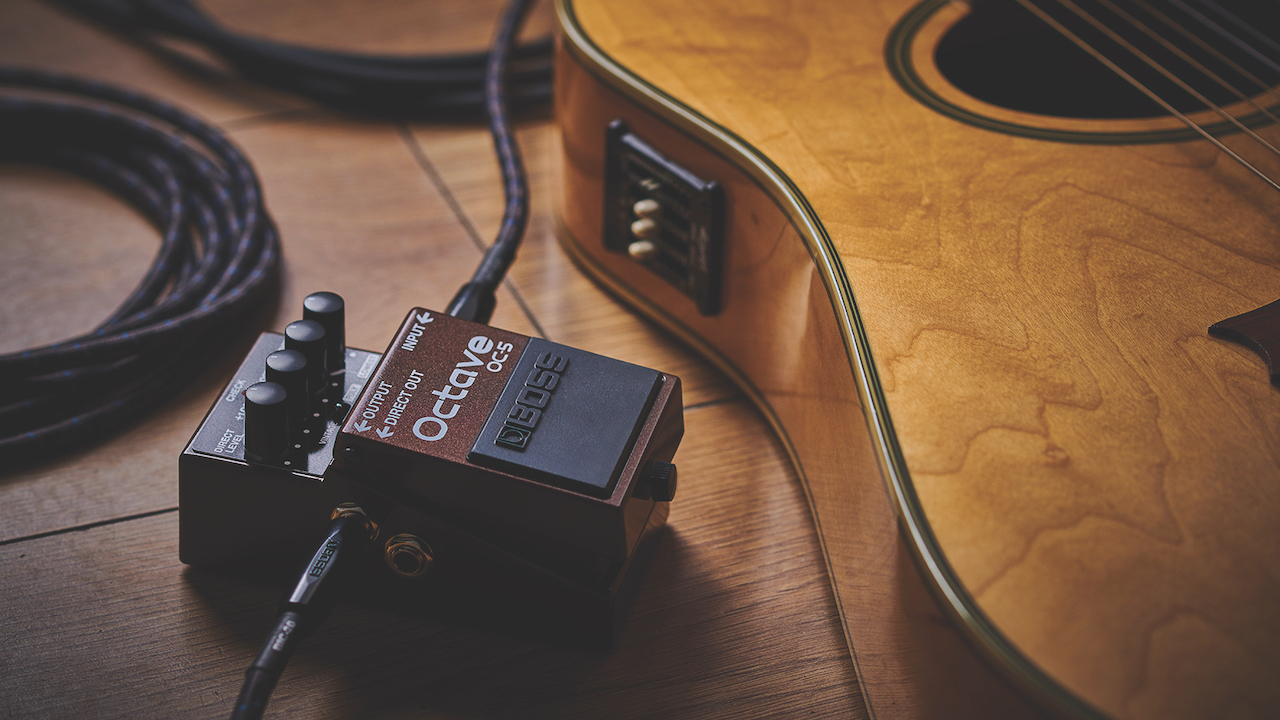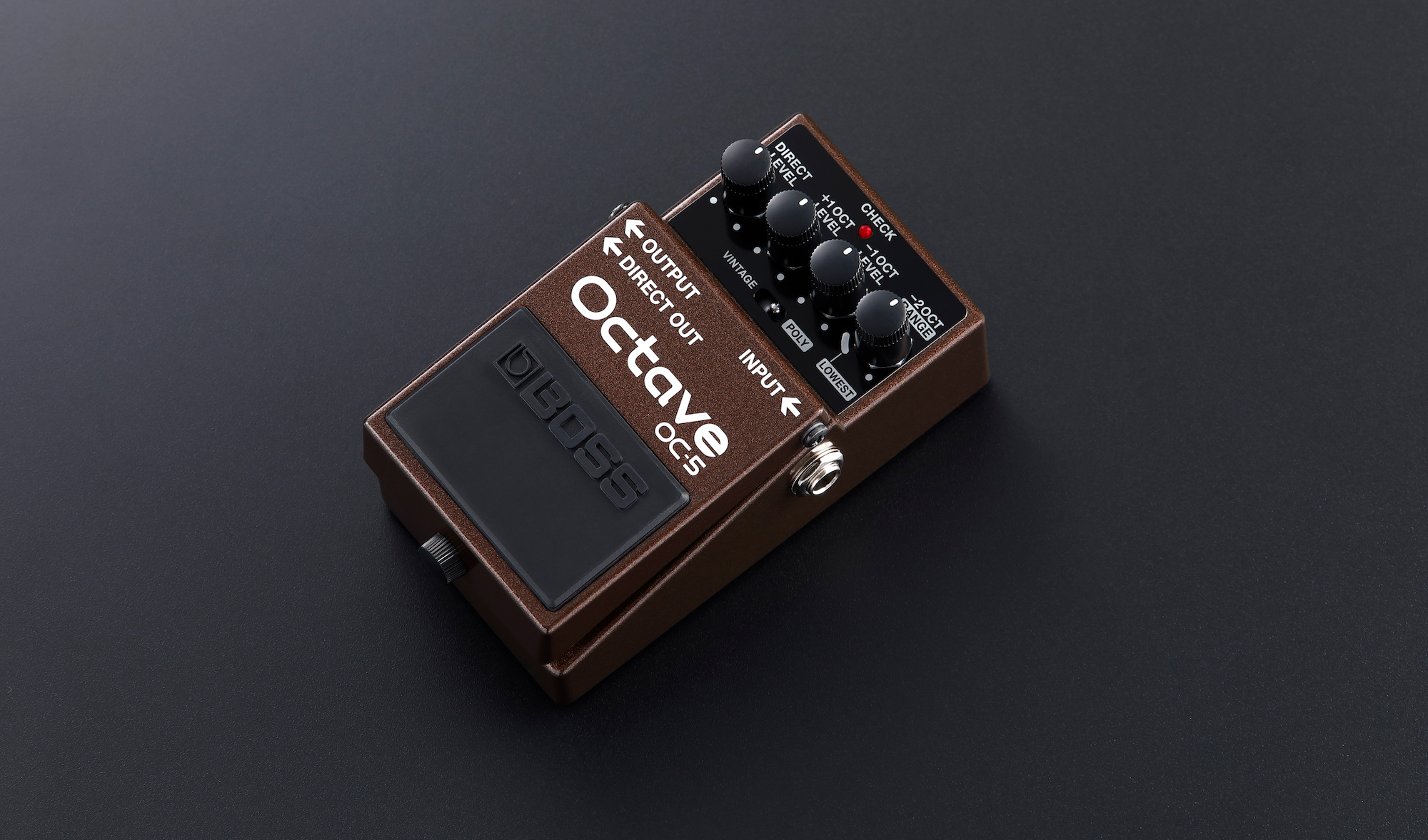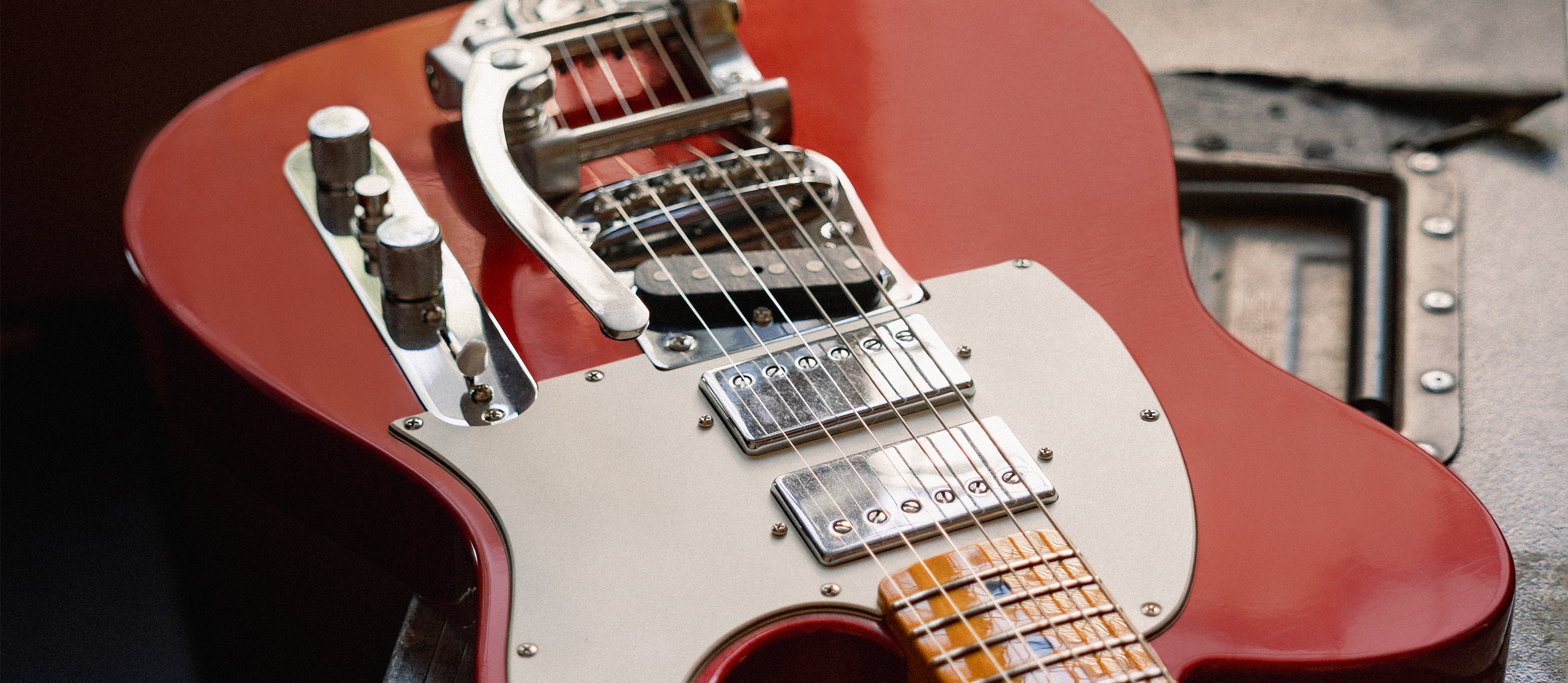“The best part of being your own bassist is that you can play anything without worrying about what the bass player is going to do”: The Boss Octave pedal's Poly mode allows guitarists to make their own bass parts, and add dimension to their sound
Your playing affects the Poly effect, which in turn will affect your playing by making you think about the bass and guitar separately

I had my mind blown watching Biréli Lagrène conjure a believable bass tone for lower notes along with a pure guitar tone for the higher register as he played what appeared to be straightforward stuff on the fretboard. How the hell was he doing that? I asked him in an interview earlier this year and his answer also blew my mind.
“I use a Boss OC-3 Super Octave pedal, on which they have this great trick called Poly mode,” Lagrène told me. “You can set that so it only adds the lower octave effect to the lower notes you play on the fifth and sixth strings, while the top four remain free of the effect. It’s miraculous for a player like myself who loves bass. It’s been around for a while, but many guitar players are unaware that the Super Octave has this option. Suddenly it provides that dimension, and everything becomes bigger.”
Get poly amorous
The OC-3 was the first octave pedal to feature Poly mode, which has been available on all subsequent Boss Octave pedals, including the latest, the OC-5, which I’ve been using. Vintage mode simulates the classic OC-2 and tracks far better for single notes, but it can’t deal with more than one note. To enter Poly mode, flick the Vintage/Poly switch to the right. Octave tones can now be applied to multiple notes, even a chord.
How to apply
To get the best results, make these tweaks. First, be sure the toggle switch on the back face is set to Guitar. Set the four control knobs across the top panel as follows: direct level at noon, +1 Oct hard left, and -1 Oct hard right. The control for -2 Oct/Range is the tricky part in Poly mode, as it adjusts the bandwidth of the -1 Oct effect. The knob’s marker point sets the line of demarcation on a filter that leaves notes above the corresponding frequency pure while it adds lower octaves to those below.
If you simply want to octave the lowest note in a chord, ping the knob far left. See the little line above the letter “L” that points up to a thicker, curved line covering about 5 to 4 o’clock on the dial? That’s the moneymaker range for splitting your pure guitar tone from the octave bass.
I usually want notes on the sixth and fifth strings to be the bass. Sometimes I can get that just right, and sometimes I must compromise. Variables include the guitar’s scale length, strings, and pickup type, as well as the technique applied: plectrum or fingerstyle, straightforward or percussive. Sometimes the tracking seems better than others, but the tone is always huge and cool in some way.

The bass-ics
The easiest thing to do is set range to lowest and strum a full barre, such as in the fifth position for a huge A chord. Next, try hybrid picking, either fingerstyle or with a pick. Pluck down on the root note while pulling up on the top strings with fingers. Move on to some different chords and positions. Experiment with different range settings and chords with a fifth-string root. Finally, try getting a simple bass pattern or walking line going while finger-plucking double- and triple-stops above.
Get The Pick Newsletter
All the latest guitar news, interviews, lessons, reviews, deals and more, direct to your inbox!
I love percussive slapping for bass, but you must be extra precise because the truer the strike of the note, the better the octave effect will track.
Your playing affects the effect, which in turn will affect your playing by making you think about the bass and guitar separately, which will help you develop part independence. Plus, it’s just so great to make your own bass parts. Playing solo becomes a duo, and so on.
Hip tip: Use the direct output to send the pure signal to a second amp while the main output becomes dedicated to the octave effect. The best part of being your own bassist is that you can play anything and everything without worrying about what the bass player is going to do. Because now, the bass player is you.
Jimmy Leslie has been Frets editor since 2016. See many Guitar Player- and Frets-related videos on his YouTube channel, and learn about his acoustic/electric rock group at spirithustler.com.
"The only thing missing is the noise from the tape loop." We review the Strymon EC-1 Single Head dTape Echo, a convincing take on a very special vintage tube Echoplex
"BigSky MX will be replacing the BigSky as my go-to reverb pedal. I’ve heard nothing that covers all the bases with such pristine and detailed audio quality." We crowned the Strymon BigSky MX the champ of multi-reverb pedals











